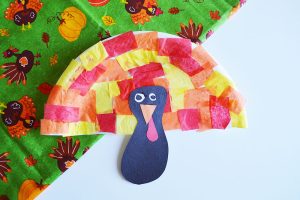
20 Snowman Crafts
Who wants to build a snowman? We do! This week we’ve rounded up some snowman crafts and activities. Each link contains a fun…
Halloween! Awesome for some….torture for others. To our children with autism, Sensory Processing Disorder, food allergies, and many more, Halloween can be frightful and not because of the ghosts and goblins! As with any holiday, Halloween brings with it many changes. The visual stimuli of pumpkins, costumes, and decorations may be quite overwhelming for kids! It’s true that children with autism can have difficulty with ANY environmental changes. Not only is the weather changing to cooler temperatures, but also, the clothes kids wear are/have changed from short to long sleeves-from shorts to pants. What can you do to help?
Here are 5 tips I’ve recommended to parents and use in my own home as Halloween approaches.
1) Maintain as much of a routine as possible. The school week may be filled with fun activities and changes in routine. Energy levels are high and this can cause our kids to become quite disorganized. Make a VISUAL schedule of the week’s events and then a separate one for Halloween day. Remember the power that a visual schedule can have on anyone-especially kids who have trouble with transitions.
2) Practice wearing costumes every evening this week. The absolute worst thing to do is to ask children to wear something that they’ve not worn before when the excitement level is high. Your expectations may be the same as when you were younger and had no trouble wearing a costume. The fact is, costumes have many different textures and even smells. Air our costumes which were packaged in plastic for at least two days to ensure there’s no “funny or weird” smells. Believe me, I did not do this for my younger son two years ago and he was absolutely overwhelmed by the smell of the costume…..I honestly did not smell anything, but he’s SUPER sensitive to scent. Definitely hyperactive olfactory sense!
3) Costumes can have different textures and tags. Cut off or round the edges of tags and make sure that seams are soft. It is always a good idea to encourage children to wear an undershirt or seamless garment underneath their costume. Masks and other plastic items can have rough edges. It’s OK if kids don’t wear a mask or make-up that matches their costume. Remember, that having a positive experience is more important than worrying about how others perceive our children.
4) SAFETY FIRST! Make a safety plan for your child. When it gets dark and there’s a lot of confusion with neighbors going door to door, any child can easily become overwhelmed. Make certain to wear glow bracelets or necklaces and carry a flashlight. We’ve found that the LED lights brighten the area much more than standard bulbs.
 Looking for MORE TIPS – plus how to sew a secret pocket into costumes?
Looking for MORE TIPS – plus how to sew a secret pocket into costumes?
5) If your child prefers to stay inside it’s OK!!!! Try making up a BINGO game to see which costumes kids are wearing. Ideas for costumes could be Superman, Batman, Disney Princesses, Star Wars characters, Zombies, Sesame Street characters, Teenage Mutant Ninja Turtles. When someone comes dressed as one of the characters, place a chip or even candy on the square.
I hope the tips are helpful! There have been many years when I’ve ordered a super-cool costume and my boys have each refused to wear it due to their Sensory Processing Disorder. I was disappointed but look back and remember that my boys were happy even without a costume. The act of handing out candy was as much fun to them as going out to trick-or-treat.
Have you heard of the Teal Pumpkin Project? Paint a pumpkin teal and leave it on your porch if you’re offering non-food items as a substitute for candy. We do this for our son with a feeding tube and love the idea!
HAVE FUN!!!!



